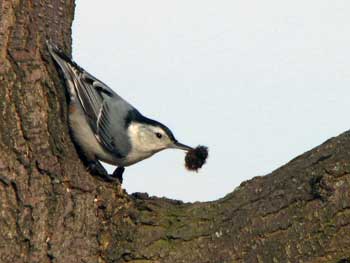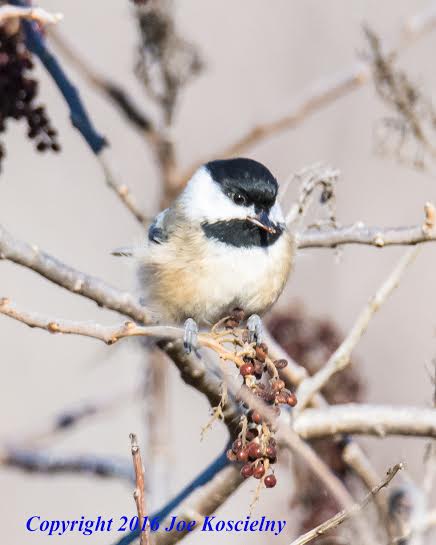
By now we are all well aware of the sad news about declining bird populations. A recent study says that we have lost 3 billion birds since 1970- https://www.allaboutbirds.org/news/vanishing-1-in-4-birds-gone/?__hstc=161696355.e61e69055bd54162f371a4ae6ab97ff1.1576695100379.1576695100379.1579463581305.2&__hssc=161696355.1.1579463581305&__hsfp=645916085#_ga=2.25959294.2119829697.1579463579-1431456943.1576695097 . That is one out of every four birds that no longer exist in our State, communities and backyards. And make no mistake; these are not some rare, exotic birds that you only see on trips around the world. These are our very own finches, sparrows and raptors that have been in steep decline for decades.
Although there are many complex reasons for this heartbreaking news, we have to understand that many of the habitats that birds need to survive have either been destroyed or have been degraded so badly that they cannot support the biodiversity need to sustain avian life.
If we are to start searching for the culprits and better yet for solutions, we only need to open our back doors and take a closer look outside. There, in a miniature version of our overall natural habitat, we will find our ecological disaster staring us back in the face.
The first thing we may see when we take a closer look are the non-native and even invasive plants that dominate suburban homes. These plants, which look green and lush, give us a false sense of a healthy backyard. But in reality they totally fail to be of any benefit to our birds, butterflies and pollinators. And since migratory birds depend on our backyards as migratory stepping stones they are forced to stop in place with no food that would otherwise give them the strength to continue on their long arduous journey.
Imagine you are driving along the highway and pull over to a rest stop. All the signs say Stop food and fuel but then you realize they are actually devoid of food and gas. Obviously you will not be going too far from that point on. It’s the same with our birds. Add to that the loss of available nesting places such as dead trees which are immediately removed sometimes for safety reasons but many times for neatness and appearance purposes and multiply that with the lack of available clean water sources that for the most part have disappeared from many suburban towns and you begin to see the bigger picture of what has happened not only to our local bird populations but to birds all over. And now the dire situation is being worsened by climate change.

Case in point: Hurricane Sandy, which devastated my local community and took its toll on the good folks that lived there. But the real damage to the environment came later as more trees were cut down as people, entire communities and insurance companies became afraid of falling trees on and near homes. As a result I no longer get birds like Chickadees and Nuthatches to my backyard as the local environment cannot sustain them. Multiply that by the surrounding towns and you have a recipe for bird disaster.
And if that is not enough birds are dying from pesticides, window strikes and feral cats right in our own backyards. I know it is tough for us to hear but it’s not hard to grasp that what is happening in and around our yards is happening nationwide on a much larger scale.
Some will say that I am over simplifying the problem. So yes, absolutely we need to tackle climate change, save the rainforests in Central and South America, stand up to save, protect and restore natural habitats in our town, State and Nationwide, but we also need to remember ecology begins at home and a good place to begin to bring back our bird populations is right in your own backyard.

But this report should not bring us down. Rather it should inspire us and be a rallying cry for a new beginning because there are many things we can do today right now to turn the tide and help our birds have a better future. There are a few simple things you can do right now.
- Landscape with native plants! They’re the true foundation of a healthy, vital habitat and will help the birds through the stresses of climate change and provide the right food at the right time for our birds. They are just as if not more beautiful as any exotic plant you can buy so you can have a magnificent yard and help the birds at the same time.
- Stop using garden pesticides and herbicides (not healthy for the birds or your family).
- Put up some good quality nest boxes and leave those old dead trees if you can -housing is at a premium not only for people but for birds too.
- Provide some clean water – something as simple as a small birdbath will help birds that need water to drink and keep their feathers clean. Just remember to change it often and keep the bath clean. Or if you have the resources put in a backyard pond.
- Protect birds from hitting your windows -if you have this problem there are easy cling on decals that can be placed on your windows to drastically cut down on this tragedy.
- Keep cats indoors-for the safety of the birds and the cats please keep them inside, safe and happy.
- Urge your elected officials to preserve and protect natural areas where you live – tell them we need to use bird friendly glass on all our buildings and to cease the use of unnecessary pesticides and herbicides. Our local, State and federal governments will need to work together so future generations will enjoy the birds like we do.
Let me know what you are doing or have done to make your backyard and local community more bird friendly. You can e-mail me at Greatauk4@gmail.com
